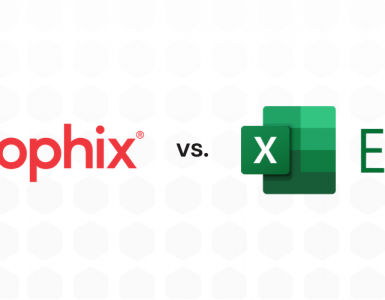Any Weakness in your Current Workflow Repeats Every Cycle
In today’s business world there is a growing need for operational efficiency, scalability and resource optimization. If we look at the key financial processes such as budgeting, planning, forecasting and reporting, an overwhelming number of businesses continue to depend on spreadsheets to perform these important functions.
Below is what I believe are the 7 Deadly sins when using spreadsheets for budgeting and reporting.
1. Costly and resource heavy
- Requires a largely manual effort to distribute, compare and consolidate information.
- Lack of automated processes such as auto signature, approval, and production of reports.
- Spreadsheets are often not prepared to integrate with other business systems (e.g., HR, CRM, and ERP), leading to a waste of time and resources when information needs updating in multiple systems.
2. Difficult budgeting process
- The focus will lie on administration rather than on how the company is optimizing its budgeting process.
- Difficult to make a special template for different departments and gather data from multiple functions.
- Comments and budget notes get overlooked.
3. Ineffective collaboration
- When the data is up to hundreds of spreadsheets, it is difficult for the various departments to work together to allocate resources.
- Silo mentality and approach weakens collaboration during budget development.
- Problematic to reconcile the budget with the overall company strategy when the track is difficult to access.
4. Poor ownership and multi-user solution
- No guides or interactive manuals for the big budget spreadsheet.
- The spreadsheet is not a multi-user solution. It provides challenges around accesses, control, and security.
5. No database structure or comment function
- Lacks multi-dimensional data. That means the spreadsheet does not have a database structure; it is a flat template.
- Not possible to add notes or comments (for example. Line item level), which automatically adds into the financial and management reports.
6. Less security and control
- Problems with version control and local file storage.
- No history of the changes that users have made.
- Greater risk of human error, such as destroying links or rode in a formula.
- Little opportunity for safety.
7. Imprecise overview and lack of control
- No comprehensive overview of the budget process while it is underway.
- Multiple versions of the truth about the financial performance.
- Lack of perspective and minimized control allows management and stakeholders have less trust in the reports.
No matter how important these functions are, the processes are tedious and require cooperation. Any weakness in your current workflow repeats every cycle (e.g., monthly reporting), and any wasted resource multiplies over time. The 7 Deadly Sins, therefore, demonstrates how spreadsheets are not geared to carry the important business critical processes which the finance department performs.






